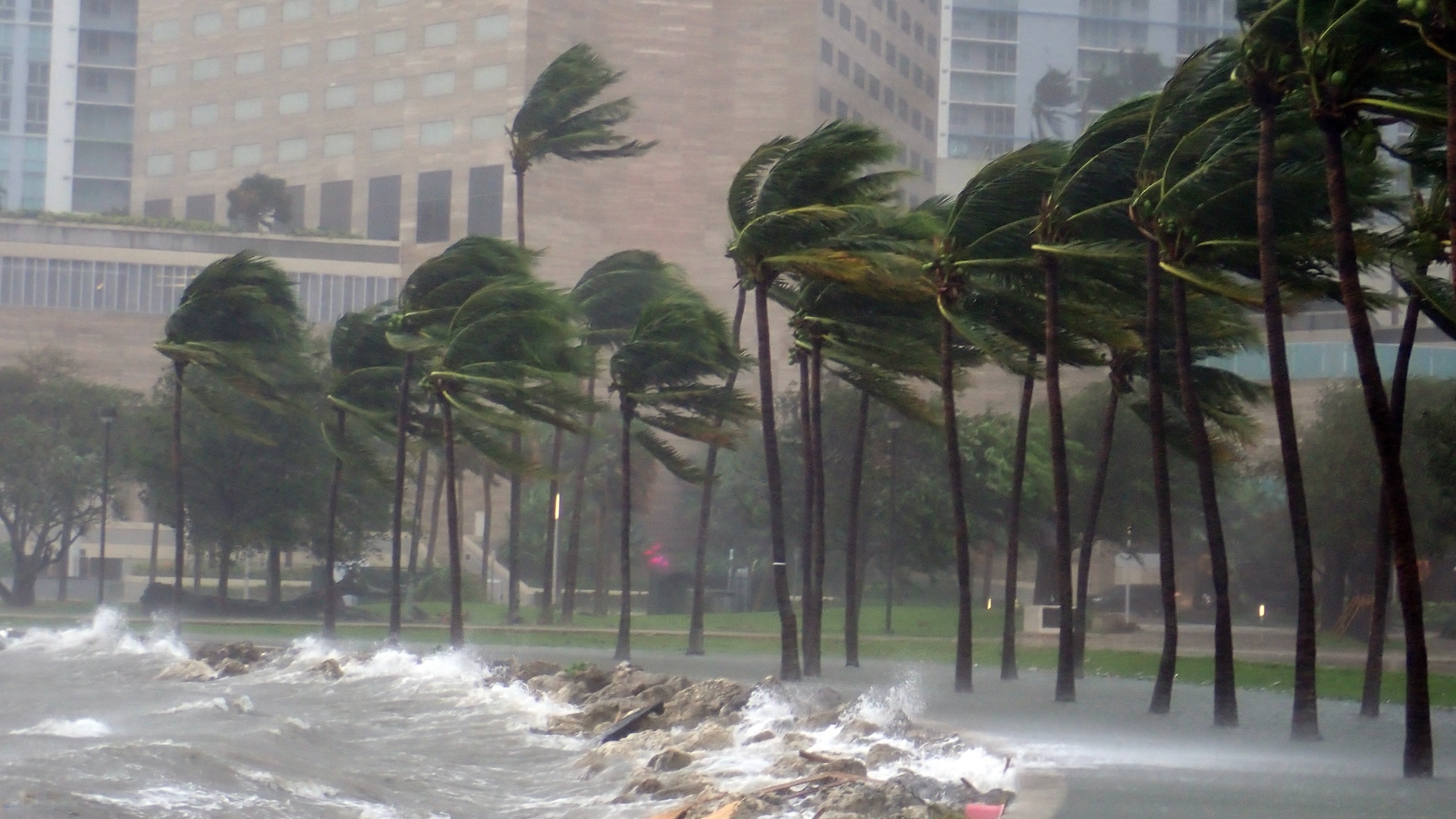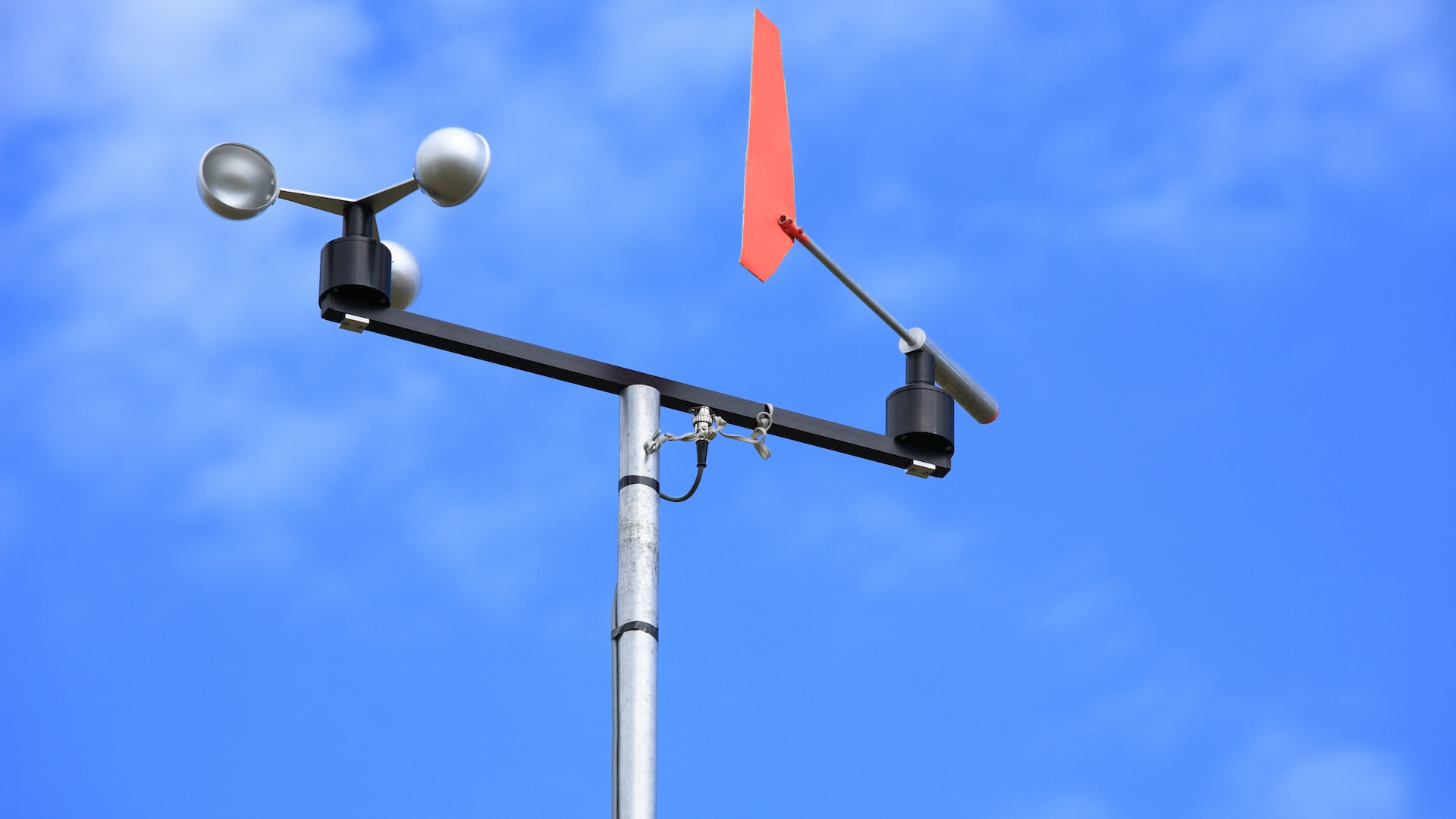
What's the fastest recorded wind speed?
Wind can whip up to surprising speeds, depending on if it's natural or human made.

In 1934, a "Big Wind" whipped the Mount Washington Observatory in New Hampshire at 231 mph (372 km/h). In 1985, a microburst crashed a Delta Airlines flight into the tarmac. And in 2017, Hurricane Irma left a path of destruction, blowing off roofs and uprooting trees with winds over 185 mph (298 km/h). So what's the fastest wind speed ever recorded?
There are different records depending on where the wind occurred, what created it, and which instrument measured it.
The strongest winds in the solar system are on Neptune, where they blow at a supersonic 1,100 mph (1,770 km/h), or 1.5 times the speed of sound, according to NASA.
On Earth, human-built wind tunnels can create supersonic winds, defined as faster than 761.2 mph (1,225 kmh) at sea level. Like the 10×10 Supersonic Wind Tunnel at NASA's Glenn Research Center, which can create wind speeds up to mach 3.5, or about 2,685 mph (4,321 km/h).
The maximum natural wind gust ever recorded is 253 mph (407 km/h), according to the World Weather and Climate Extremes Archive, which is maintained by the World Meteorological Organization (WMO). It occurred on Barrow Island, Australia, on April 10, 1996, when a tropical cyclone hit the isolated island. (Tropical cyclones are the same as hurricanes, but occur in the South Pacific and Indian Ocean.) An anemometer — an instrument that typically has three cups that spin around a central axis when the wind blows — at the island's weather station recorded the 3-to-5-second gust.
Related: What's the fastest thing on Earth?
It took over a decade before the WMO saw the data and confirmed it in the record books because Barrow Island is privately owned by the oil company Chevron.
Sign up for the Live Science daily newsletter now
Get the world’s most fascinating discoveries delivered straight to your inbox.
"It kind of slipped through the cracks for a few years," Randall Cerveny, a professor of geographical sciences at Arizona State University, told Live Science. Cerveny is also the WMO rapporteur of weather and climate extremes, and his team was in charge of verifying the record. They traveled to Australia and found the same anemometer intact and functional. The reading wasn't an anomaly.
The WMO only acknowledges wind speed data from instruments like anemometers because it's a physical measurement of wind, Cerveny said. That means there are recorded wind speeds faster than those at Barrow Island, but they were measured with devices that use estimates or calculations, so they don't make it in the record books.

Anemometer readings do have some limitations, however. The structures they're mounted on can get damaged in fierce winds, and they can be placed only where humans can go. For example, it's not easy to get an anemometer 4 to 8 miles (6 to 13 kilometers) up in the jet stream. Jet streams are fast rivers of air that can reach speeds of over 275 mph (443 km/h), according to the National Oceanic and Atmospheric Administration.
Cerveny and his team are currently investigating jet stream speed recordings of 300 mph (483 km/h) over Japan and the Western Pacific Ocean as potential record breakers. These would be direct measurements of the wind taken by an instrument called a radiosonde attached to a weather balloon. "That might be the world's strongest winds that we've seen on the planet," he said.
Another way to measure wind speed is with Doppler radar. Radar recordings aren't considered for wind records by the WMO because they are remote estimates, versus direct measurements, Cerveny said. Radar sends out a pulse of energy that scatters off raindrops or cloud water droplets and measures the energy that comes back. It repeats this process and calculates the difference between the readings.
"Then one can calculate how fast the average raindrop is moving in that volume," Joshua Wurman, director of the FARM (Flexible Array of Radars and Mesonets) Facility at the University of Alabama in Huntsville, told Live Science.
The biggest advantage of radar is that it can measure things that are far away, Wurman said. Those include fast-moving tornadoes, which can whip air around at speeds even faster than at Barrow Island.
Wurman studies tornadoes using "Doppler on Wheels," a radar device on the back of a big truck. This allows him to follow tornadoes and map them with radar without having to be inside the twister. Those speeds won't be making the record books (for now) because the WMO considers tornado wind speeds as a separate category because they can't be directly measured. But, if they ever get verifiable physical instrument wind measurements from inside a tornado, they would likely restructure wind extreme categories to reflect the new data, Cerveny told Live Science in an email.
Wurman and others recorded the highest tornado wind speeds in 1999 in Bridge Creek, Oklahoma, at 302 mph (486 km/h), according to the WMO archive. Wurman published the results in a 2007 article in the journal Monthly Weather Review.
More recently, Wurman's team calculated wind speeds as high as 309 to 318 mph (497 to 512 km/h) in a tornado that tore through Greenfield, Iowa, in May 2024, according to a statement from the FARM Facility. However, the margin of error in the radar estimation means that this new reading is basically the same as the 1999 record, Wurman said.
"I think it's safe to say that there are rare tornadoes that have wind speeds over 300 mph [483 km/h]," he said. "Probably there aren't any that go over 400 mph [644 km/h], just because we haven't seen anything exceeding 300 by much."

Hannah Loss is a science journalist based in Boston. She covers the environment and has written for Scientific American, Sierra and Inside Climate News. Hannah graduated from Tufts University with a B.A. in English and environmental studies. She received a Master's degree in journalism from NYU's Science, Health and Environmental Reporting Program.









